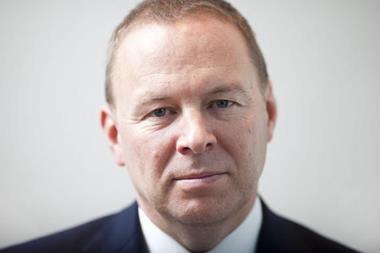A year ago, all indicators pointed to the demise of the MGA. But insurers’ changing circumstances and a shift in approach is making this model more attractive, and sparking a rebirth of the market
Rewind to this time last year, and it appeared that managing general agencies (MGAs) were facing a crisis as the big beasts of insurance, Aviva and AXA, lined up against them.
AXA wanted to flush out unprofitable business and withdrew itself as a carrier to Primary. Fusion, part of Towergate, had also suffered, having lost both AXA and Aviva as capacity providers.
But looking around today, it seems MGAs are flourishing, arising phoenix-like from the ashes of the soft market. Software giant SSP is close to finalising its carriers for Keychoice Network, its commercial lines underwriting agency led by Jonathan Davey. In February, Aon founder Pat Ryan launched his own London-based MGA, Ryan Specialty (Europe). Ryan follows in the footsteps of JLT-owned Thistle, Unicorn’s THB and Cooper Gay’s Oliva, all launched last year.
Furthermore, Towergate Underwriting chief executive Clive Nathan says he was “oversubscribed” for capacity last year and it looks like Fortis will step in as a long-term provider for Primary.
With insurers beating a path to the doors of MGAs to provide capacity, it begs the question: what has changed in the past year? Well, quite a lot actually.
Market movements
First, insurers’ expectations have altered. If you asked an insurer this time last year if the market would harden, the majority would have said yes. That hasn’t happened. The recession has pushed down the amount of premium companies are willing to pay, leading to a soft market and, ultimately, playing into the hands of MGAs.
Nathan says: “What has probably changed was that there was an expectation that a hardening market might help to cure some of the evils that are in business. So if you can rely on rates going up, that gives you gross written premium, no more staff required, and so on; you just rely on that happening.
“Now, with a continuing soft market, it means you can’t rely on an increase in premiums to deliver results, so you’ve got to look elsewhere and, frankly, if you’ve taken out a substantial amount of cost out of the business then where do you look for your growth?
“Part of that must come from people who can deliver growth without a huge amount of cost involved.” Enter the MGA.
And, in addition to the continuing soft market, investment returns have picked up, providing insurers with the capital to keep on investing in the model. But it hasn’t all gone the MGAs’ way.
At some point during the last 18 months, the insurers realised that some underwriting agencies were delivering unprofitable business, but were still getting those large upfront commissions. It led to a shift in thinking.
AXA personal lines intermediary managing director Mike Keating says one way to ensure MGAs keep on top of their underwriting is to have “skin in the game”.
Keating says: “In some of the older MGAs, where the insurer was providing capacity, everybody would be hoping that the expertise of the underwriting done by the MGA and the distribution would deliver the required return to the insurer. If it didn’t, the insurer carried the whole cost of that.
“There are a number of financial models now where target combined operating ratio is set by both the insurer and the MGA. That could be a combination of loss ratio, commission and expenses. If that combined operating ratio is not there, then as part of that, some of that pain is shared by the MGA. That makes it far more equitable between the insurer and the MGA, because it really means that the MGA has full skin in the game.”
Value added
Secondly, the business model is beginning to move away from ‘writing new business at any cost’, instead concentrating on areas where it has more expertise.
UK General – which consisted of Primary and Longhawk before the merger – is reviewing some non-specialist business lines where there was intense competition, such as hotels, motor trade, takeaways, directors’ and officers’, and professional indemnity, and switching the focus to specialist and niche lines, such as property owners, commercial combined and tradesmen.
Chief operating officer Michael Warren acknowledges that he will be under pressure to deliver. “I am from an insurer background rather than an MGA background; I know the focus has to be on delivering that underwriting profit,” he admits.
Certainly, that’s something AXA is demanding. Keating says AXA has withdrawn from “vanilla-type MGAs”, which didn’t offer anything different in distribution or product, instead ploughing that investment back into its own underwriting.
“If you go over the checklist and ask: ‘Is this giving us access to distribution on niche products? Is it delivering underwriting profit that is an easier route to market? Is it a quicker or more efficient way to market?’ If those questions are answered successfully, then MGAs will continue to flourish.
“But if you can’t answer those questions satisfactorily, then I think you have to question why you are providing that capital. Because you’re not only just providing capital, you’re basically being a hostage to the underwriting discipline and the DNA of the people you are providing that capital to,” he says.
Power play
Adjusting the model in the insurers’ favour may be easier to do at the higher end of the spectrum, where the MGA largely has control of the pen, but where MGAs have less control, pushing through change could be harder.
After all, if the rates and terms are set by the carrier, how can it then ask the MGA to carry the can for unprofitable business?
Thistle chief executive James Gerry has some sympathy for those MGAs. “By their very nature, insurance carriers are probably loath to release underwriting authority. Think of it – they would rather have the control. That sounds plausible, that sounds good. In other words: ‘We haven’t given away our authority to those mugs over there; they have to do what we tell them.’
“If a carrier wants to do that, that’s fine. But I do have some sympathy for the MGA that says: ‘If you’re not giving us the authority and the control, we don’t want to take the risk of financial reward based on underwriting result because you’re determining the underwriting result, Mr Carrier – not us.’ I think some carriers are still very much supportive of those kinds of models.”
Looking to the future, Gerry believes that a couple of MGAs will start up in the next 12 months and a couple will close down.
He says: “In all markets, the bad ones should go and the good ones should stay. I just think that when you have a benign market with lots of capacity, the bad ones probably survive longer than they should have.”
Good ones, bad ones, polished-up ones. It’s clear the MGA landscape is still very mixed, with more headroom for change. One thing is for certain, though: love them or loathe them, it looks like MGAs are positioned to take off. IT





































No comments yet